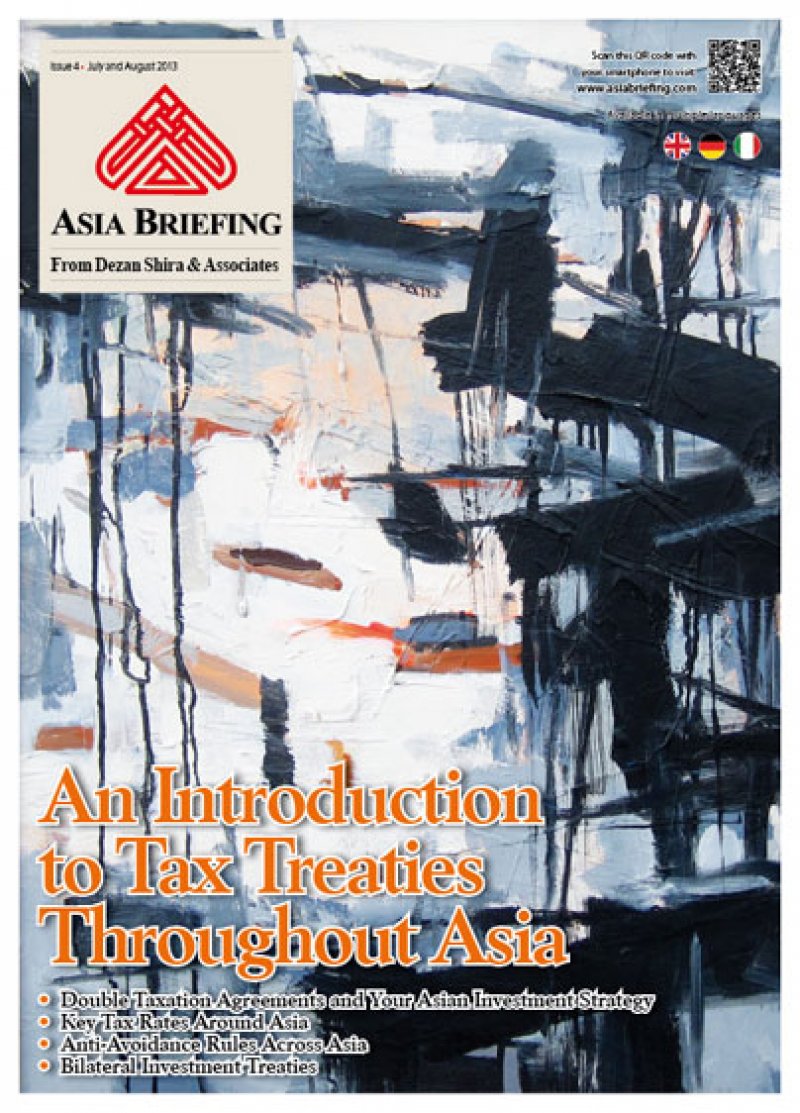
An Introduction to Tax Treaties Throughout Asia
Published: July 2013In this issue of Asia Briefing Magazine, we look at the various types of trade and tax treaties that exist between Asian nations. These include bilateral investment treaties - which are somewhat unfashionable, yet still the major focal point of bilateral trade between many smaller emerging nations - and also the meatier double tax treaties and free trade agreements that directly affect businesses operating in Asia.
No. of Pages: 13 pages
In this issue:
- Double Taxation Agreements and Your Asia Investment Strategy
- Key Tax Rates Around Asia
- Anti-Avoidance Rules Across Asia
- Bilateral Investment Treaties
“Tax, used properly, greases the wheels of international commerce,” as one of our clients recently put it. That’s arather different sentiment to the old adage about death and taxes, but it is one that is becoming increasingly valid, and especially so throughout Asia. As world trade continues to grow (even in these troubled economic times, global trade grew over 2 percent in 2012), the reduction of trade barriers, tariffs, and customs duties is becoming increasingly common. Part of this is the remit of the World Trade Organization, which monitors and provides a legal platform for international commerce. However, another significant growing trend in the promotion of global trade is the creation of new trade and tax agreements.
In this issue of Asia Briefing Magazine, we take a more regional view of the subject, and look at the various types of trade and tax treaties that exist between Asian nations. These include bilateral investment treaties (BITs) - which are somewhat unfashionable, yet still the major focal point of bilateral trade between many smaller emerging nations - and also the meatier double tax treaties (DTAs) and free trade agreements (FTAs) that directly affect businesses operating in Asia. China’s own FTA with ASEAN abolishes import duties on thousands of products, and manufacturing in say Vietnam to service the China market is beginning to make a lot of sense if your product falls under the treaty remit. The DTAs that go along with this can, under the correct structure, permit employees to be based in foreign countries without tax penalty, and may even allow service offices to be established abroad without being subject to local profits taxes. Together, such trade agreements are a powerful combination.
Simply put, tax treaties are changing the nature of global logistics and the global supply chain, and are having a profound impact on Asia’s business landscape. We hope this introduction is useful and helps our readers understand and begin to make business cases for examining pertinent treaties to take advantage of what amounts to the ongoing dismantling of regional and global trade barriers.

